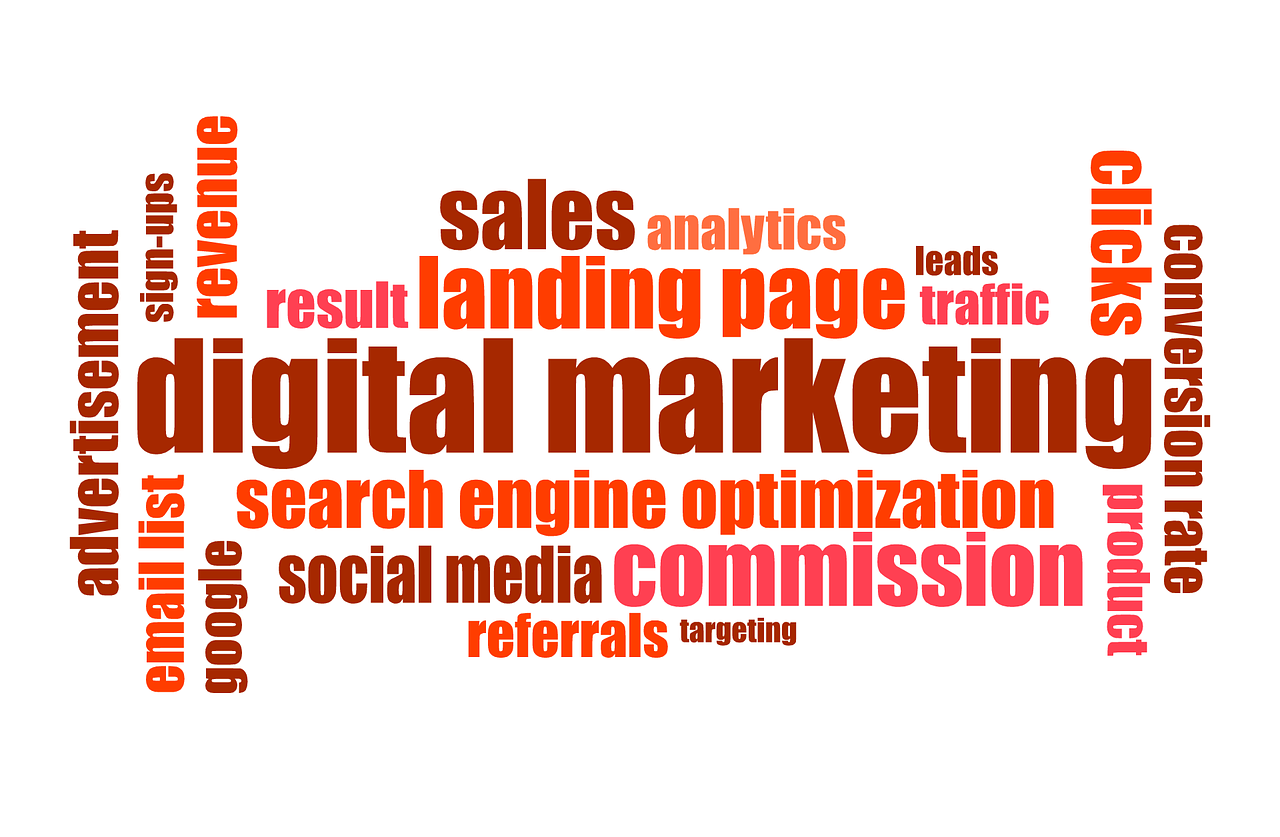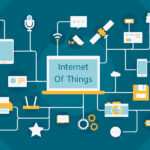In today’s fast-paced world, businesses are increasingly turning to digital marketing to connect with their audience and drive success. This comprehensive guide will walk you through the intricacies of digital marketing, from its definition to the latest trends and best practices.

Table of Contents
I. Introduction
A. Definition of Digital Marketing (D M)
Digital marketing refers to the use of online channels, platforms, and technologies to promote products, services, or brands. It encompasses a wide range of activities such as social media marketing, search engine optimization (SEO), email marketing, content marketing, and online advertising. The primary goal of digital marketing is to connect with and engage a target audience through various digital channels, ultimately driving awareness, customer acquisition, and business growth in the digital landscape.
B. Importance of Digital Marketing (D M)
Digital marketing plays a pivotal role in the contemporary business landscape, offering a multitude of advantages for organizations seeking to thrive in the digital age. One of its primary strengths is the ability to provide a global reach, allowing businesses to connect with diverse audiences across geographical boundaries. Moreover, D M stands out for its cost-effectiveness when compared to traditional marketing channels like television or print advertising. The precision of targeted advertising is another key feature, as it enables businesses to tailor their messages to specific demographics, interests, and behaviors, enhancing the chances of engagement and conversion.
The measurability of results is a distinctive aspect of D M, with analytics tools providing real-time insights into various metrics such as website traffic, conversion rates, and customer behavior. This data-driven approach empowers businesses to make informed decisions and optimize their strategies for optimal performance. Interactivity and engagement are facilitated through digital platforms, fostering direct communication with the audience through comments, shares, and likes. This not only builds a sense of community but also contributes to brand development by establishing a more personal connection with customers.
The flexibility and adaptability of digital marketing campaigns are critical in responding to dynamic market conditions and shifts in consumer behavior. Businesses can adjust their strategies in real-time to stay relevant and effective. Personalization is another significant benefit, allowing businesses to create tailored experiences for their audience based on preferences and behavior, thereby enhancing customer satisfaction. With the increasing use of digital devices, accessibility becomes a key advantage, ensuring that businesses are constantly available to their target audience.
In essence, digital marketing offers a competitive edge in today’s business environment, allowing organizations to establish a strong online presence, build brand awareness, and foster customer loyalty. It has become a necessity for staying competitive, providing a versatile toolkit for businesses to navigate and succeed in the ever-evolving digital landscape.
II. Evolution of Digital Marketing

A. Traditional Marketing vs. Digital Marketing
Traditional marketing and digital marketing represent two distinct approaches to promoting products, services, or brands, each with its own set of characteristics and advantages.
Traditional marketing relies on conventional channels such as print media, TV, radio, billboards, and direct mail to reach a broad audience. It often involves physical materials and is broadcasted to a mass audience. While it has been a longstanding and trusted method, traditional marketing tends to be more costly, offers limited targeting capabilities, and lacks real-time engagement and measurability.
On the other hand, D M leverages online channels like social media, search engines, email, and websites. It provides a more cost-effective solution, precise audience targeting based on demographics, interests, and behaviors, and real-time analytics for tracking performance. D M fosters interactivity through comments, shares, and likes, and allows for personalized content tailored to specific user preferences. The flexibility and adaptability of digital campaigns also make them suitable for a rapidly changing business environment.
In summary, while traditional marketing relies on established offline channels, D M harnesses the power of online platforms for cost-effective, targeted, and measurable promotional activities. Both approaches have their merits, and businesses often integrate elements of both to create a comprehensive and effective marketing strategy.
B. Key Milestones in Digital Marketing
With important turning points that have molded its environment and methodologies, D M has experienced tremendous evolution. Some noteworthy milestones include:
- 1990s – Emergence of the Internet: The advent of the internet laid the foundation for D M. Websites became a crucial platform for businesses to establish an online presence.
- 2000 – Dot-com Boom: The dot-com boom marked a surge in internet-based businesses, emphasizing the importance of having an online presence. This era saw the rise of e-commerce and the need for digital marketing strategies.
- 2002 – Launch of AdWords: Google introduced AdWords, a self-service advertising platform, revolutionizing online advertising. It allowed businesses to bid on keywords and display targeted ads on Google search results.
- 2004 – Rise of Social Media: The launch of Facebook in 2004 marked the beginning of the social media era. Platforms like Twitter, LinkedIn, and later Instagram became integral for digital marketing strategies, offering new channels for engagement.
- 2007 – Introduction of the iPhone: The launch of the iPhone and subsequent smartphones transformed user behavior. Mobile marketing became essential as people increasingly accessed the internet through their mobile devices.
- 2010 – Rise of Content Marketing: Businesses started focusing on content marketing as a strategic approach to provide valuable, relevant content to attract and engage audiences, improving SEO and brand perception.
- 2012 – Introduction of Instagram and Pinterest for Marketing: Instagram and Pinterest gained popularity as visual platforms, providing new opportunities for businesses to showcase products and engage with audiences.
- 2015 – Mobilegeddon: Google’s algorithm update prioritized mobile-friendly websites in search rankings, emphasizing the importance of mobile optimization for digital marketing.
- 2016 – Emergence of Live Video: Live video streaming on platforms like Facebook and Instagram gained traction, offering a real-time, interactive way for businesses to connect with their audience.
- 2020 – Acceleration of E-commerce: The COVID-19 pandemic accelerated the shift towards e-commerce, emphasizing the importance of digital marketing in reaching and serving online consumers.
These milestones highlight the dynamic nature of D M, showcasing its evolution alongside technological advancements and shifts in consumer behavior. Businesses that adapt to these changes and leverage emerging trends are better positioned to succeed in the digital marketplace.
III. Components of Digital Marketing
A. Search Engine Optimization (SEO)
Uncover the secrets of SEO and how optimizing your online content can improve your website’s visibility on search engines.

B. Social Media Marketing (SMM)
Dive into the world of social media and discover how platforms like Facebook, Instagram, and Twitter can be powerful tools for brand promotion.
C. Content Marketing
Explore the art of creating valuable and relevant content to engage your audience and build lasting relationships.
D. Email Marketing
Unlock the potential of email campaigns as a cost-effective and direct way to communicate with your audience.
E. Pay-Per-Click (PPC) Advertising
Delve into the world of paid advertising and understand how PPC campaigns can drive targeted traffic to your website.
IV. Benefits of Digital Marketing
A. Increased Reach
Digital marketing breaks geographical barriers, allowing businesses to reach a global audience. One of the significant advantages of D M is its ability to increase reach for businesses and their marketing efforts. Unlike traditional marketing channels with geographical limitations, digital marketing leverages online platforms to connect with a global audience. This expanded reach is particularly crucial for businesses aiming to break through physical boundaries and tap into diverse markets.
B. Targeted Advertising
Learn how digital marketing enables precise targeting, ensuring your message reaches the right audience at the right time. Targeted advertising is a strategic approach to marketing that focuses on delivering messages to a specific audience based on various criteria such as demographics, interests, behaviors, or location. Unlike traditional advertising, which often reaches a broad audience, targeted advertising aims to tailor content to the preferences and characteristics of a defined group of individuals.
C. Cost-Effectiveness
Discover how digital marketing often provides a higher return on investment compared to traditional methods.Cost-effectiveness is a key advantage associated with digital marketing strategies. In contrast to traditional forms of advertising such as TV commercials or print media, digital marketing offers a more economical approach to reaching a targeted audience. Various digital channels, including social media, email, and content marketing, allow businesses to engage with their audience at a fraction of the cost of traditional methods.
One of the contributing factors to the cost-effectiveness of digital marketing is the ability to precisely target specific demographics, interests, and behaviors. This targeted approach ensures that marketing efforts are directed towards individuals who are more likely to be interested in the products or services being promoted. As a result, businesses can optimize their advertising budgets by focusing on the most relevant audience segments.
D. Analytics and Insights
Explore the wealth of data available through D M tools and how it can inform strategic decision-making.
Analytics and insights play a pivotal role in the realm of D M, providing businesses with valuable data to evaluate the performance of their online strategies. Analytics involves the systematic analysis of various metrics and data points, while insights refer to the actionable information derived from this analysis.
In D M, analytics tools track and measure a wide range of parameters, including website traffic, user behavior, conversion rates, and engagement across various online platforms. This data is instrumental in understanding how users interact with a website or digital content, helping businesses make informed decisions to optimize their online presence.
V. Challenges in D M.
A. Saturation and Competition
Navigate the challenges posed by the saturation of online content and the fierce competition for consumer attention.
B. Rapid Technological Changes
Stay ahead of the curve by understanding and adapting to the rapid changes in technology that shape the digital marketing landscape.
VI. Best Practices in D M.
A. Understanding the Target Audience
Learn how creating buyer personas and understanding your audience’s needs are crucial for effective digital marketing.
B. Creating Quality Content
Explore the principles of crafting compelling content that resonates with your audience and adds value to their online experience.
C. Utilizing Data and Analytics
Harness the power of data to refine your digital marketing strategies and maximize your ROI.
VII. Future Trends in D M.

A. Artificial Intelligence in Marketing
Discover how AI is revolutionizing digital marketing, from chatbots to personalized customer experiences.
B. Voice Search Optimization
Explore the impact of voice search and how businesses can optimize their content for this emerging trend.
C. Video Marketing
Uncover the growing importance of video content and how it can enhance your digital marketing efforts.
VIII. Case Studies
A. Successful Digital Marketing Campaigns
Learn from real-world examples of digital marketing success stories and the strategies behind them.
B. Learning from Failures
Explore instances where digital marketing campaigns fell short and the valuable lessons that can be gleaned from them.
IX. Digital Marketing for Small Businesses
A. Importance of Digital Presence
Understand why even small businesses must establish a strong digital presence to compete in today’s market.
B. Budget-Friendly Strategies
Discover cost-effective digital marketing strategies tailored for small businesses with limited resources.
X. Digital Marketing Tools and Platforms
A. Google Analytics
Gain insights into how Google Analytics can help you track and analyze website traffic, user behavior, and more.
B. Social Media Management Tools
Explore tools that streamline social media management, making it easier to schedule posts, track engagement, and analyze performance.
C. Email Marketing Platforms
Discover popular email marketing platforms that can elevate your email campaigns and enhance customer communication.
XI. The Role of SEO in Digital Marketing
A. Importance of SEO
Dig deeper into why SEO is a cornerstone of successful digital marketing strategies and its impact on search engine rankings.
B. SEO Techniques and Best Practices
Explore practical tips and techniques to optimize your website for search engines and improve your online visibility.
XII. Social Media’s Impact on Digital Marketing
A. Leveraging Different Platforms
Understand how to tailor your approach on various social media platforms to maximize engagement and reach.
B. Building a Social Media Strategy
Craft a comprehensive social media strategy to align with your business goals and resonate with your target audience.
XIII. Content Marketing Strategies
A. Creating Compelling Content
Learn the art of storytelling and creating content that captivates your audience and establishes your brand identity.
B. Distribution and Promotion
Discover effective ways to distribute and promote your content across digital channels for maximum impact.
XIV. Email Marketing: Still Relevant
A. Personalized Email Campaigns
Explore the power of personalization in email marketing and how it enhances customer relationships.
B. Building Subscriber Lists
Learn strategies to build and nurture your email subscriber lists for sustained engagement and conversions.
XV. Measuring Digital Marketing Success
A. Key Performance Indicators (KPIs)
Identify and track key metrics to gauge the success of your digital marketing campaigns and make data-driven decisions.
B. Continuous Improvement
Embrace a culture of continuous improvement by learning from analytics and adapting your strategies accordingly.
Conclusion
In conclusion, digital marketing is a dynamic and indispensable tool for businesses aiming to thrive in the digital age. By understanding its components, best practices, and future trends, businesses can craft effective strategies to connect with their audience and achieve lasting success.
FAQs
- Is digital marketing only for big businesses? No, digital marketing is adaptable and beneficial for businesses of all sizes, providing scalable solutions to meet specific needs.
- How often should I update my digital marketing strategy? Regular updates are essential, considering the evolving landscape and emerging trends. Aim for a quarterly review at the minimum.
- Can digital marketing work without a significant budget? Yes, various cost-effective strategies exist, enabling businesses with modest budgets to establish a strong digital presence.
- What role does content play in digital marketing? Content is the backbone of digital marketing, serving as a means to engage, inform, and build relationships with your audience.
- How do I measure the success of my digital marketing efforts? Key Performance Indicators (KPIs) such as website traffic, conversion rates, and engagement metrics are crucial for assessing success.










2 thoughts on “Digital Marketing Unveiled: Navigating the Landscape of Online Promotion”